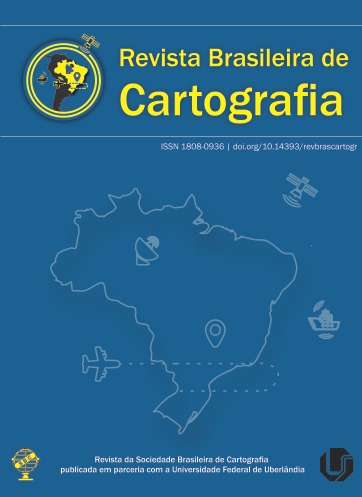Impact of the Compatibility of Velocities Reference Frame in the Process of Updating Coordinates using PPP
Main Article Content
Abstract
In Precise Point Positioning (PPP), the coordinates estimated at the epoch of the survey are referenced to the materialization of the global reference system used in the orbits of the satellites, currently IGb14 (epoch of observation). However, regional geodetic systems are officialized and adopted in different countries, such as in Brazil, which adopts SIRGAS2000 (epoch 2000.4). One way of dealing with these differences is to use the Helmert transformation in conjunction with a velocity model (which also has a reference system) to make both the reference and the epoch compatible. This work aims to evaluate the performance of the VEMOS2009 and VEMOS2017 models in the application of the coordinate update procedure for high precision GNSS positioning, considering or not the compatibility of the reference velocities obtained. It was used GNSS data in the RINEX format from 175 RBMC stations processed with the IBGE-PPP online service. In view of the results found, it was possible to verify that the compatibility of the velocities reference proved to be effective for the process of updating the coordinates obtained in the IBGE-PPP. Of the 1513 coordinates obtained with each of the four velocities, VEMOS2009-CCR presented 62.92% of the smallest discrepancies, followed by VEMOS2017-CCR with 29.54%, VEMOS2009-SCR with 7.21% and VEMOS2017-SCR with 0, 33%. Regarding the decrease in discrepancies after the compatibility of the velocities reference, it was found that, for VEMOS2009, 85.86% of the coordinates presented a smaller discrepancy after the update. For VEMOS2017, this decrease occurred in 98.61% of the coordinates.
Downloads
Metrics
Article Details
Authors who publish in this journal agree to the following terms:
- Authors retain copyright and grant the journal right of first publication with the work simultaneously licensed under a Creative Commons Attribution License that allows others to share the work with an acknowledgment of the work's authorship and initial publication in this journal.
- Authors can enter into separate, additional contractual arrangements for the non-exclusive distribution of the journal's published version of the work (e.g., post it to an institutional repository or publish it in a book), with an acknowledgment of its initial publication in this journal.
- Authors are permitted and encouraged to post their work online (e.g., in institutional repositories or on their website) before and during the submission process, as it can lead to productive exchanges, as well as earlier and greater citation of published work (see "The Effect of Open Access").





